Low profile open-pin-field arrays down to 4 mm stack height and up to 400 total I/Os.
FAMILY OVERVIEW
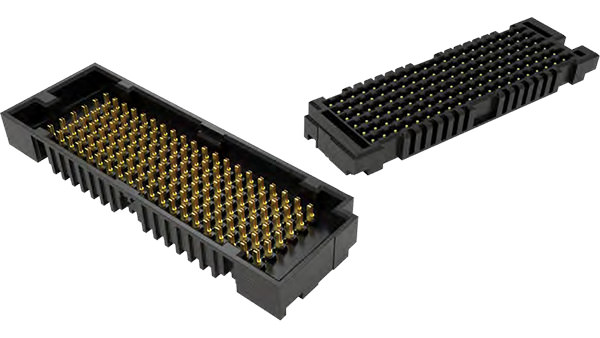
These low profile, high-speed arrays feature a dual beam contact system on a 1.27 mm x 1.27 mm (.050" x .050") pitch grid for maximum grounding and routing flexibility. This system is available in 4 mm, 4.5 mm and 5 mm mated heights with up to 400 total pins in 4, 6 or 8 row configurations.
They support 56 Gbps PAM4 applications and are also Final Inch® certified for Break Out Region trace routing recommendations to save designers time and money. Standard lead-free solder crimp simplifies IR reflow terminations and improves solder joint reliability.
FEATURES
- 4 mm, 4.5 mm, 5 mm stack heights
- Up to 400 I/Os
- 4, 6 and 8 row designs
- .050" (1.27 mm) pitch
- Dual beam contact system
- Solder crimp termination for ease of processing
- 56 Gbps PAM4 Performance
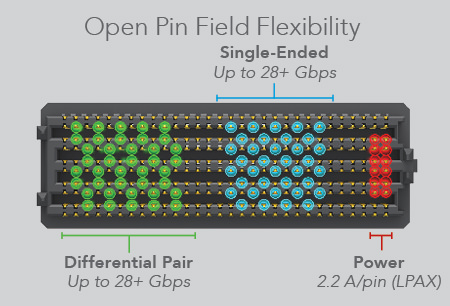
DOWNLOADS & RESOURCES
Literature
JSO
SureWare™ Jack Screw Precision Board Stacking Standoff
Features
- Works as a traditional standoff
- Assists with unmating LSHM, SEAM/SEAF, SEAM8/SEAF8, LPAM/LPAF, ADM6/ADF6 and other high-normal-force connectors
- Reduces risk for component damage on boards
- Board stacks from 4.00 mm to 16.00 mm
- Press-fit and threaded bases available
LPAF
.050" LP Array™ High-Speed High-Density Low Profile Open-Pin-Field Array, Socket
Features
- Low profile 4 mm, 4.5 mm, 5 mm stack heights
- Up to 400 I/Os
- 4, 6 and 8 row designs
- .050" (1.27 mm) pitch
- Dual beam contact system
- Solder crimp termination for ease of processing
- 56 Gbps PAM4 performance
- Analog Over Array™ capable
LPAM
.050" LP Array™ High-Speed High-Density Low Profile Open-Pin-Field Array, Terminal
Features
- Low profile 4 mm, 4.5 mm, 5 mm stack heights
- Up to 400 I/Os
- 4, 6 and 8 row designs
- .050" (1.27 mm) pitch
- Dual beam contact system
- Solder crimp termination for ease of processing
- 56 Gbps PAM4 performance
- Analog Over Array™ capable
More Ultra Micro
CONTACT SALES
First Name
Last Name
Don't want to fill out a form?
Chat with a product expert directly.

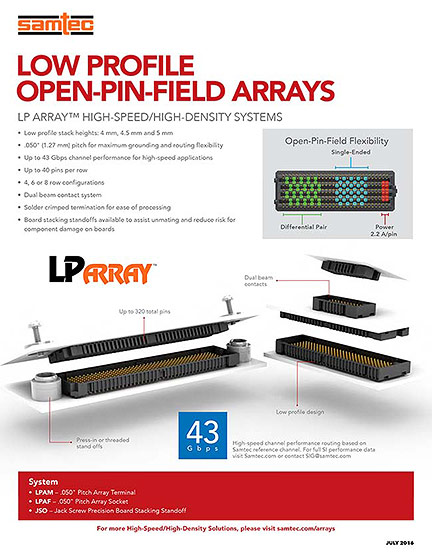
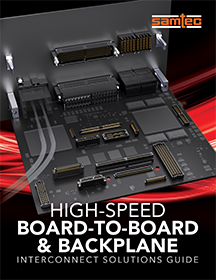
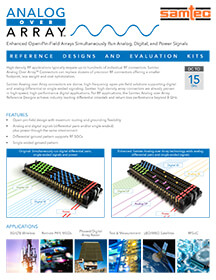
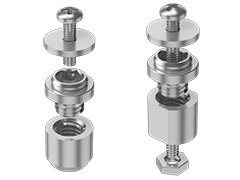
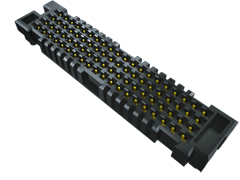
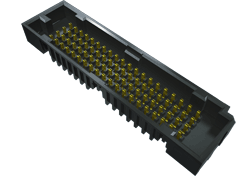

 Your Privacy Choices
Your Privacy Choices